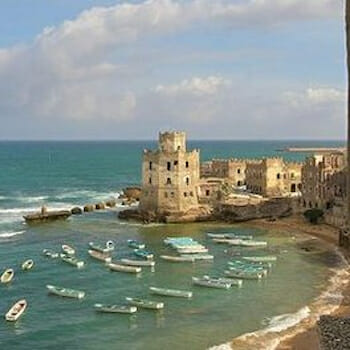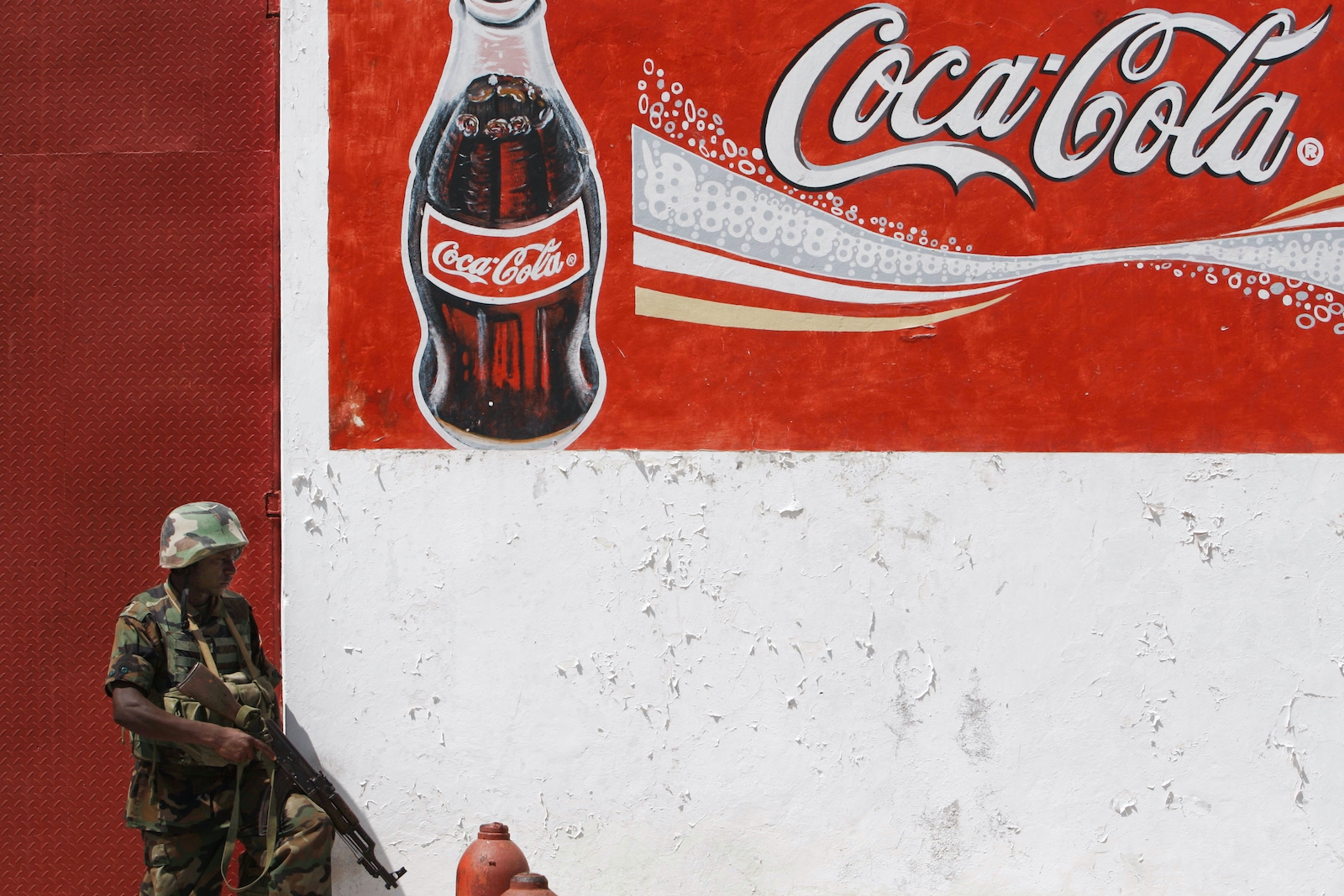
Unavenged Injustices: AMISOM Murders with Impunity
FAARAH, Somalia – The unmistakable stench of decaying human flesh—a strongly nauseous and pungent smell—accosted us as we arrived at the scene of the murder, but Hooyo Habibo Adan, who brought me here, did not seem the least perturbed. She stood there, gently scanning the surroundings; her face, expressionless; her body, stiff, and her mind, distant and aloof. A thin and frail mother of pensionable age, she spent her entire life in this farming village along with her three children. Her once beautiful complexion had withered with age, baked by the Somali sun. She leaned on a forked hangool —a wooden walking stick—for support and pensively gazed into the ground, her dark-brown imploring eyes trying to make sense of the mayhem in front of her.
“This is where they killed them,” she said in a deep, melancholic voice, referring to the seven civilians killed by soldiers from the African Union Mission to Somalia (AMISOM).
On Tuesday, August 10, a convoy of armoured vehicles transporting AMISOM soldiers to the Beldamin-Golweyn Forward Operating Base in the Lower Shabelle region was caught in an ambush. Al-Shabaab militants fired upon the convoy from several directions in one of their archetypal hit-and-run attacks that they have come to hone against AMISOM troops. The attack lasted less than 20 minutes and claimed the lives of three Ugandan soldiers, according to eyewitnesses, before the assailants vanished into the bushes.
Enraged by the audacity of the assault, AMISOM soldiers, locals said, disembarked and combed through the dense bushes, indiscriminately firing a salvo of guns, before scrambling again and charging into the small farming village of Faarah.
Situated between Danow and Golweyn, 120 km southwest of Mogadishu, Faarah is one of more than a dozen villages that sprawl across the farmlands in the lush Lower Shabelle region.

Arriving at the village—with which I, oddly enough, share a name—I was rather taken aback by the formidable, ominous silence that hung over it. It was nearly two weeks after the murders but there was still no joy in this lonely place. It was quiet, dreary, and void. Life moved at a lethargic pace and a cloak of profound desolation enveloped the isolated village. The air was warm, thick, and clammy under an overcast sky; the atmosphere sombre and stifled with grief; the few rustic huts—made of a mixture of cow dung and mud—swallowed by the emptiness of the landscape. Even the tedious lives of the peasant farmers here seemed to be engulfed by a certain degree of monotonous languor that lulled everyone into a dull and drowsy state of existence.
Ushered by an energetic guide—who bounced as he walked and set a brisk pace that I struggled to keep up with—I followed the winding path that led to Hooyo Habibo’s hut at the edge of the village. Laboriously, I navigated through a series of decrepit mud houses and murky bends, trailed by a group of children who laughed at my desperate attempts to avoid the stagnant puddles, muddy potholes, and the ubiquitous cowpat. Teasing me mercilessly, they roared with laughter whenever I did step on the unavoidable dark brown residue.
Arriving at Hooyo Habibo’s hut was a relief. A small group of relatives and villagers had gathered at her hut to pay their respects.
“Shoo! Shoo! Waryaa!” shouted an old man, chasing away the swarm of noisy, half-naked children who had vigorously frogmarched me to the hut. I slumped into the stool provided and greeted everyone.
I glanced casually into the crowd. Men of different ages and wearing multi-coloured sarongs stood or sat huddled in a corner. Opposite them, and visibly intrigued, the village girls clustered around in their vibrantly coloured hijabs, their demure smiles perfectly complementing the dignified solemn composure of the elders.
They all had an alert, naturally fierce countenance and a curious gaze that somehow subdued the fathomless despair that disfigured their faces from time to time. The glittering eyes in their dark, sunburnt faces silently expressed an unspeakable pain; the horrific killings still weighed heavily on their chests.
Mohamed Yonis, a softly-spoken local elder of imperturbable character, said his son was working in one of the farms when he was picked up by AMISOM soldiers and killed.
“What did my son do to deserve this cruel death,” he asked in an exasperated tone. “He was not part of Al-Shabaab; he was just a farmer.”
The owner of the farm where Yonis’s son worked, Haji Omar Ganey, was also killed. He was a well-known local businessman.
“We hold the Somali government responsible for this crime,” Yonis continued.
“No! It was the Ugandans. AMISOM killed them,” bellowed a young farmer in the corner.
“Quiet, you imbecile!” retorted Yonis, wagging his cane sternly at the young farmer, “the Somali government is responsible. They brought these Africans here to kills us. Soldiers from the Somali army guided them to our village. We want the government to—”
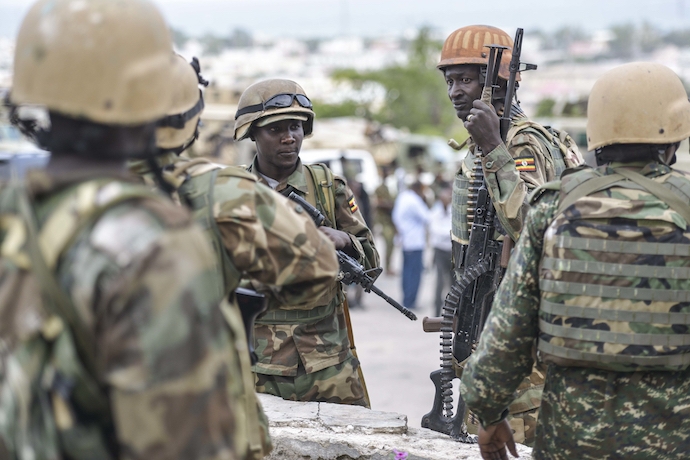
Murmurs of the crowd interrupted him and drowned his words in a roaring chorus of incoherent words and incomprehensible whispers, all, though, lost in the cacophony of discordant sounds of the village—clanging metal, crowing cocks, braying donkeys, and the blissful laughter of children in the distance.
More grief-stricken villagers soon gathered around us, their inquisitive eyes looking for answers I did not have.
An elderly man, with a bright orange, henna-dyed beard, could not contain his anger at journalists prying into their lives.
“People like you come and go, ask silly questions and never return,” he snarled. “What use is your reporting to us? Leave the poor woman alone!”
“I just wanted to—”
I stopped. I could not answer. And if I did, he would not understand.
While some seethed with indignation and cried out in desolate exclamations, others maintained a dignified silence. Yet all were clearly distraught. Hooyo Habibo sat on an old mattress and seemed to be irretrievably lost in her thoughts.
After offering a few words of consolation, I requested her to share her story and recount how the murders took place. Despite her initial reluctance to speak, she eventually relented—with a bit of gentle persuasion—and narrated how it all started.
When AMISOM’s armoured personnel carriers ploughed through the village, filled with rage, Hooyo Habibo was sitting outside her tiny hut, waiting for her 25-year-old son’s arrival from the farm. She earnestly watched her two daughters hulling corn in a large wooden mortar. As she listened to the girls’ melodious chanting, moving her head to and fro to the rhythmic beat of the pestle and mortar, however, she was blithely unaware that her son was fighting for his life a few blocks away from her house.
“I heard the roar of vehicles, but did not make much of it until I heard some shots being fired,” she recalled. “My neighbour came running and told me that the Ugandans have come into the village and they have taken my son,” she said.
She rushed towards the commotion, despite the pain in her joints, but by the time she reached there, the Ugandan soldiers were long gone. Relatives prevented her from approaching the scene of the murder and when the news was broken to her an hour later that her son was among those killed, she cried, she said, “until my tears ducts dried.”
“I didn’t know what to do or who to turn to; only Allah,” she said plaintively.
Numbed with disbelief, it wasn’t until the next day when she visited the spot where her son was killed. There she observed, for the first time, the sheer magnitude of the atrocity and witnessed the aftermath of the explosion that killed her only son. The fragments of the mine that was strapped to his body, punctured not only his lungs, but pierced right through her heart.
“Can you take me there hooyo?” I inquired.
She smiled wanly, and pointed for her slippers to be fetched.
She walked with slow, measured steps, gently wading in the grass and stopping every now and then to take a deep breath before continuing. Along with her declining years, her health was also on the wane.
Arriving a few minutes later, I was horrified at the gruesome nature of the killings. Pieces of charred human remains lay scattered across the scene. Flung by the force of the explosion far and wide, they left a trail of blood, now dried by the sun, and burnt flesh. As she narrated her harrowing experience and recounted the tragedy that unfolded here on that fateful evening, she glanced, every so often, around the thickets as if searching for something.
Slowly and methodically, she examined the scene and sifted the grains of dirt, inspecting and prodding the ground with her hangool. As she passed the small, blackened depression in the earth that marked the point of explosion, she followed traces of dry blood and picked up small parts of human remains.
It was impossible to identify the burnt pieces of flesh, but Hooyo Habibo was certain that the bloodied piece of cloth she held in her hand belonged to her son. She did not flinch or furrow her brow, but simply stared at it in contemplation, as if she could hear the cries and lamentations of her son as he was about to be killed. Despite her remarkable stoicism, however, she looked unbearably devastated. The gentle tears that rolled down her cheeks and her solemn facial features—quietly and undemonstratively expressed—belied her deep emotional suffering, perhaps evoked by her return to the scene of the crime less than two weeks later.
“Was he your only son?” I asked, trying ever so delicately not to aggravate her pain.
She nodded woodenly and then fell silent.
“He was all I had,” she added a few minutes later in a soft, elegiac tone, “may Allah grant him paradise.”
The murder of the civilians has left many families in Faarah’s close-knit community grieving and irreparably shattered by the event.
Deny, discredit, and then defer
Following the massacre that plunged this otherwise tranquil village into the political limelight, AMISOM desperately sought to cover up its tracks, in the belief that public knowledge of the ghastly details of the crime, and the subsequent disapproval, will almost certainly sound the death knell for African Union military operations in Somalia. In a carefully planned but incoherent attempt to cover up the crime, AMISOM commanders tried to falsely incriminate the civilians—haphazardly placing old, rusty weapons besides the bodies of the men they killed before taking their photographs and publishing them online to garner support. In a (now deleted) tweet authorized by the Deputy Special Representative of Chairperson of the AU Commission for Somalia, Simon Mulongo, AMISOM said “7 terrorists were killed while others sustained injuries and an assortment of weapons was recovered.”
But there was not an ounce of coherence in this criminal act and the viciousness of the attack—the seven men were gagged, bound together, and forced to lie on top of an anti-tank mine before being blown up to pieces—has left the villagers gasping in horror.
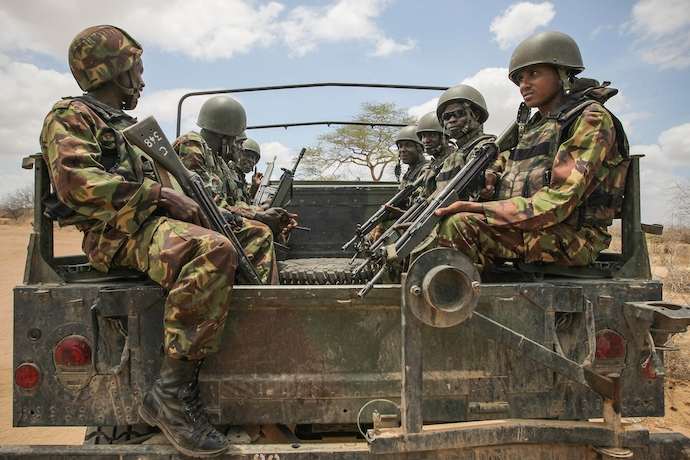
When AMISOM troops initially detained the men, the local governor of Golweyn, Maadey Sheekh Osman, tried to talk to the AMISOM commanders. His repeated entreaties for clemency on behalf of the civilians who were desperately writhing and squirming in agony, however, fell on deaf ears.
“They refused to engage with the local government authority,” Osman said. “We’ve tried repeatedly to talk to the AMISOM commanders but, again and again, they refused to talk to us.”
“They murdered seven people in total; three were mechanics and the other four were local villagers working in their farms,” Osman added.
AMISOM said in a statement that it was investigating the civilian deaths. But it continues to fudge the issue and often follows a particular response plan to events such as these. Its communications unit often resorts to the same desiccated old approach of labeling innocent civilians as terrorists in order to absolve the soldiers of any culpability.
In the few instances where incontrovertible evidence of AMISOM crimes does surface, however, AMISOM responds by first denying the facts, then, if that doesn’t work, discrediting the journalists or denying them access and later, when all else fails, deferring the case with promises of “thorough investigations” that never materialise. And that is exactly what they did in this case.
This strategy of “deny, discredit, and then defer” seems to have worked for AMISOM on many prior occasions. This time, however, the sheer barbarity of the massacre and the wanton disregard for human life has left many ordinary Somalis infuriated, especially against the Ugandan contingent.
‘A sickening and barbaric attack’
Embittered by the lack of justice, the Somali government’s ineptitude, and AMISOM’s stonewalling tactics, hundreds of Somalis took to the streets of Mogadishu in protest, in order to bring to light the injustices enacted upon them by what they pejoratively referred to as the “Black colonialists.” They vowed in unison to fight against the “invaders.” The victims’ families, on the other hand, gathered what was left of their loved ones – burnt clothes, charred flesh, and pulverized bones – and refused to bury them until they received justice.
Feelings of unresolved resentment against AMISOM’s injustices—a blend of sorrow and anger—stifled the clamorous protest in Mogadishu.
“It was an absolutely sickening and barbaric attack on innocent civilians,” shouted one of the relatives of the victims whom I met at the protests. “It was pure savagery, nothing else. And if the government cannot hold them to account, then we will.”
The crowd cheered to his tune before chanting the oft-repeated phrase at Somali protests; “AMISOM dooni meyno” (We don’t want AMISOM).
Only after intense public pressure did AMISOM officials reluctantly acquiesce to the demands of a formal investigation. They recanted the allegations of terrorism and the Somali government called for an inquiry into the killings. But it was too little, too late. The damage had already been done.
In a country where news travels rather fast and where the battle for hearts and minds is a significant driving force in the political realm, AMISOM has lost a great deal of public support. Even the staunchest supporters of AMISOM argue that recurrent attacks such as these undermine the credibility of the force and, more often than not, give credence to the insurgents’ claims that attempt to justify AMISOM as an “invading force of disbelievers.” The tragic events of August 10th shocked the people of Somalia and renewed the calls for AMISOM’s immediate withdrawal, giving an impetus to the growing voice of dissent in Somalia.
The tribal chief of the large and powerful Mudolood clan, Ugaas Mohamud Ali Ugaas, vehemently denied the accusations of terrorism and leveled some scathing criticisms at AMISOM.
“Throughout their stay in Somalia, AMISOM has perpetrated heinous crimes against the Somali people,” he said.
“We will take every legitimate course of action in order to hold AMISOM accountable for their actions. And I call upon the Somali people never to accept such humiliation.”
Referring to Haji Omar, Ugaas said, “If AMISOM can kill a local tribal elder and label him a terrorist, then that means that to them we are all terrorists. We will never accept the brutal massacre of our people.”
The African Union mandated force is now, slowly but surely, losing not only the consent of the population but also the support of the very government that endorsed its deployment.
AMISOM: A litany of abuses
First deployed in 2007, the African Union Mission to Somalia has repeatedly come under strong criticism for its heavy-handed approach and frequent allegations of human rights abuses against local civilians.
AMISOM troops have been implicated in a spate of arbitrary arrest and detentions, extrajudicial killings, rapes, and violence against ordinary civilians, as well as numerous other cases of ill-treatment and humiliation of the locals during their military operations.
In a damning 71-page report, Human Rights Watch documented widespread human rights abuses, rape, and sexual exploitation of Somali women in AMISOM-run health facilities in the country. The HRW report uncovered evidence that AMISOM soldiers gang-raped women and girls as young as 12 “while seeking medical assistance and water on the AMISOM bases” and “abused their positions of power to prey on the city’s most vulnerable women and girls.”
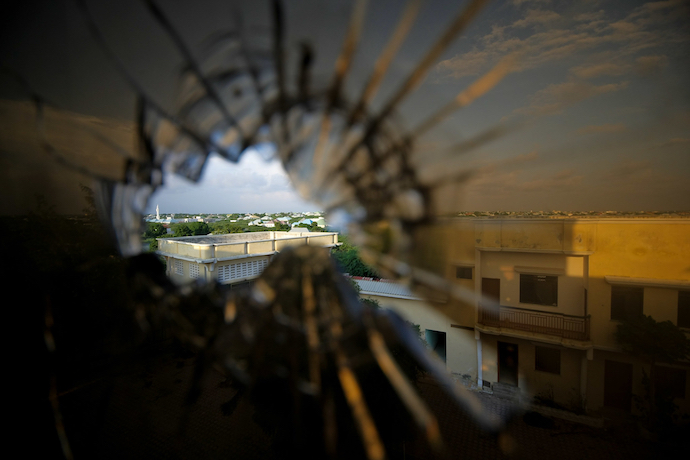
During their operations, AMISOM soldiers often carry out reprisal attacks against villagers whenever they come under attack or sustain heavy casualties. Soldiers often arrest and detain dozens of local residents in areas close to the attack site and kill them without due process. In May 2021, AMISOM forces in the Balcad district shot and killed eight Somali medical workers following an ambush against their convoy.
While the African Union has an obligation to investigate and prosecute those responsible for such war crimes, rarely are members of its armed forces held accountable for their actions. AMISOM has also repeatedly failed to comply with international humanitarian and human rights laws. Not wanting to expose their soldiers to criminal prosecution, AMISOM commanders often deny their soldiers’ involvement in the killings and have repeatedly shown a lack of willingness to investigate, prosecute, or punish offenders.
In 2015, and under a UN directive, a Civilian Casualty Tracking, Analysis and Response Cell (CCTARC) was established to record and analyse the information gathered on civilian casualties in Somalia. But with the responsibility of tracking allegations and the number of civilian casualties assigned to the sector commanders of the AMISOM troop-contributing countries (TCCs), it is very hard to assess the reliability and effectiveness of such measures. As such, many civilian deaths have never been thoroughly and conclusively investigated.
An in-depth and independent investigation into the many years of human rights abuses and violations committed by AMISOM troops against Somali civilians has not yet been conducted. According to the Human Rights and Protection Group (HRPG) of the United Nations Assistance Mission in Somalia (UNSOM), there is an “inadequate or lack of credible investigations into allegations” of abuses, noting that “AMISOM has also not communicated to the UN outcomes of any investigations or prosecutions carried out by TCCs,” despite the measures put in place in that regard.
A culture of impunity
The systematic denial of wrongdoing by AMISOM commanders in every case and its tendency to exonerate its soldiers from all responsibility means that AMISOM troops who are accused of crimes routinely go unpunished. Enabling the gross violations against the civilians is the fact that AMISOM enjoys complete immunity against prosecution in Somalia, allowing its soldiers to act with complete impunity. So entrenched is the impunity that it has been tolerated all these years in the pious hope that the African Union forces will magically transform Somalia’s marauding bandits into a capable army and its crumbling institutions into a functioning government.
The recurrent civilian killings, AMISOM’s frequent denials and the government’s glaring apathy—and sometimes dismissiveness and wilful ignorance—are all an indication of the culture of impunity that remains prevalent in Somalia and empowers AMISOM troops to perpetrate gross human rights violations against innocent citizens without any accountability.
Under the African Union mandate, any accountability for violations committed by AMISOM troops is ultimately dependent on the troop-contributing countries and through their own justice mechanisms, as the Somali government does not have any legal jurisdiction to prosecute them. Apparently, with no sense of the irony involved, the very commanders implicated in the crimes are often the ones expected to conduct investigations into their own actions, greatly jeopardising the reliability of AMISOM investigations.
An influential Somali MP I spoke with in Mogadishu, who chose to remain anonymous for fear of losing his seat at this critical juncture in the Somali political landscape, derided AMISOM’s response as “ridiculous.”
“They are literally getting away with murder, and our government is too powerless to do anything about it,” he said.
“All the soldiers involved in that barbaric act should face criminal charges,” he added, visibly indignantly. “If the so-called investigation does not publish detailed findings and prosecute those responsible for these crimes, then it means that the blood of our people is worthless.”
Unavenged injustice
Returning to Hooyo Habibo’s hut in the evening, the mood was still one of gloom and despair. It was as if the dying groans of her son were still echoing throughout the farmlands, beckoning and tormenting her.
She sat on her old mattress, listlessly slouched against her mud hut, the bright orange headscarf elegantly draped around her shoulders fluttering in the wind. The walk had sapped all her energy and there she sat, withering away in this forlorn village, like an old tree that bore neither leaves, nor root or fruit. She silently concentrated on her beads, muttering away her prayers. I wanted to talk to her further, but the pain of remembrance was beginning to take its toll on her.
As dusk was approaching, the villagers escorted me to my vehicle. With a heavy heart, I bade them a warm farewell, promising to tell their story to the world in the faint hope that it would somehow prick the impenetrable conscience of their killers. Nevertheless, I was well aware, deep down, that little will change for them in terms of receiving justice.
The journey has left a dull, lingering ache in my soul and an aura of melancholy descended upon me as I departed. The tiny village remains etched in my memory and the sad, mournful eyes of Hooyo Habibo still haunt me wherever I go. The journey back to Mogadishu was slow and wearisome, the interminable miles of silence on the road rekindling those indelible memories.
I found it hard to fully fathom the sadistic and gratuitous brutality of the crime. And as twilight faded to night, I could not help but pity the villagers’ sense of helplessness; their misery and despair, their pain and agony, and the amount of psychological trauma they must have endured.
I could not muster the courage to tell them that in the face of insurmountable odds against them, and with AMISOM’s blithe disregard for the civilians’ lives in Somalia, they will have to adjust to a world filled with injustices. I could not tell them that without viable justice mechanisms in place or legal recourse, they are left with no choice but to defer their grievances to the will of God and submit to the divine promise of eventual justice. AMISOM is under no legal obligation to recognise or redress the grievances of their victims, and as such, they can murder with impunity.
Now, more than one month after the attack, the burning resentment against AMISOM has somewhat faded and given way to sharp disappointment, bouts of transient sadness, and a feeling of utter betrayal by the Somali government. Left alone to struggle with their grief, the villagers have now reluctantly resigned to the monotony of their village life, reliving the intensively painful memories of the event and silently lamenting their loss in a country where showing emotions is frowned upon and seen as a sign of weakness.
The relatives of the victims continue to protest amid the political upheaval in Mogadishu with dying hopes, and they too are beginning to come to the bitter acceptance of the reality; that AMISOM is and will remain untouchable in Somalia.
But not all people think alike. For those who perceive that they have been oppressed, humiliated and their dignity violated, unavenged injustice can serve as a powerful motivator to vengeance. When agony reaches its endurance threshold and all that internalized anger is outwardly expressed, the excess of suffering will, with just enough resolve, ignite a deadly human urge to respond to the grievances. Already, some see that as the sovereign remedy against AMISOM’s injustices and the only successful resolution to relieve the pain, restore the balance of honour and repair the injury to their pride. Indeed, vengeance is in the air.
